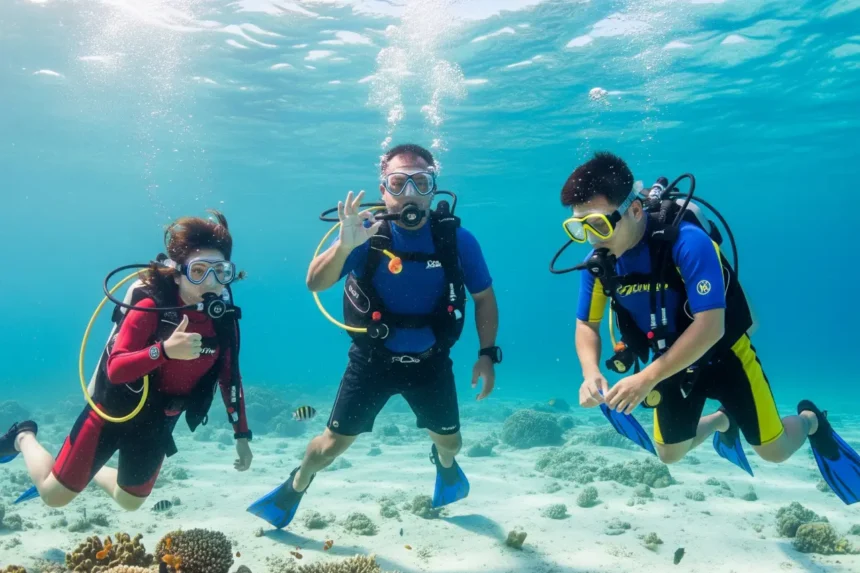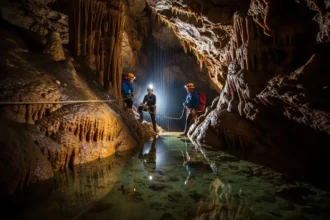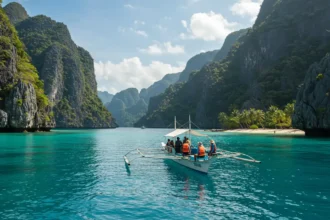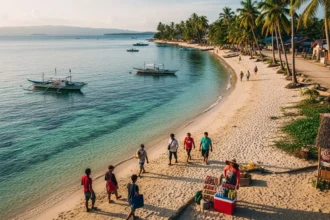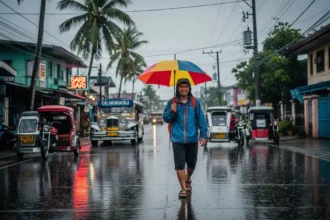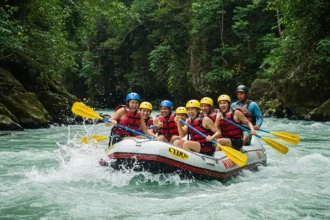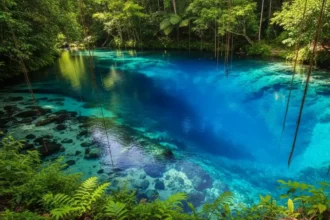✨ Why Learn Diving in the Philippines?
The Philippines is one of the world’s top scuba diving destinations, with more than 7,000 islands offering crystal-clear waters, vibrant coral reefs, and diverse marine life. Whether it’s swimming with sardines in Moalboal, exploring shipwrecks in Coron, or spotting turtles in Bohol, there’s no better classroom for learning how to dive.
- ✨ Why Learn Diving in the Philippines?
- 📚 What is Open Water Certification?
- 🪪 Step-by-Step Process to Get Certified
- 💸 How Much Does It Cost in the Philippines?
- 🧰 Gear: What’s Provided vs What to Bring
- 🛑 Safety & Medical Requirements
- 🌍 Best Places in the Philippines to Get Certified
- 📱 Useful Apps & Communities
- 📚 Frequently Asked Questions
- ❤️ Diving Opens a New World
Getting your Open Water Diving Certification is like getting a passport to an entirely new world. With it, you can legally and safely dive up to 18 meters deep, rent scuba gear anywhere in the world, and join fun dives without needing an instructor. The best part? Courses in the Philippines are often cheaper than in Western countries, but the training quality is world-class.
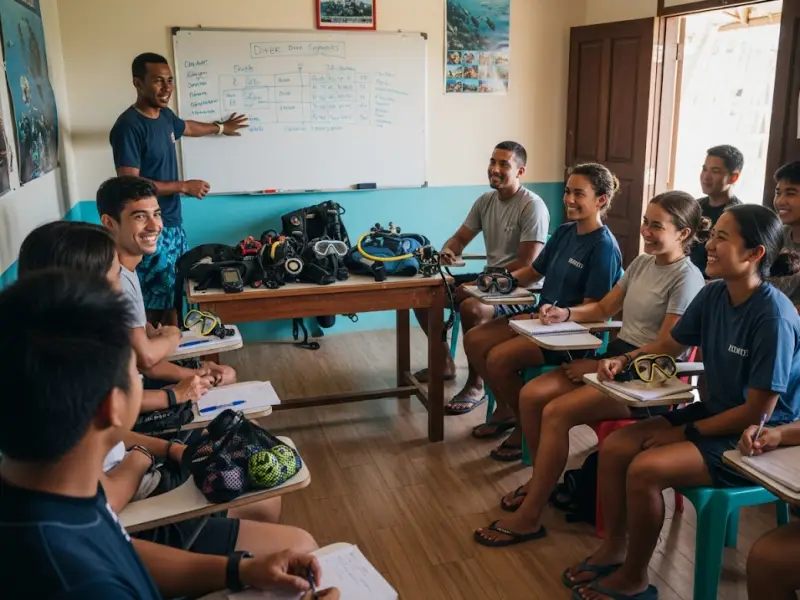
📚 What is Open Water Certification?
If you’ve ever dreamed of exploring coral reefs, swimming alongside turtles, or simply breathing underwater without panic – this is your golden ticket. The Open Water Diver Certification is the entry-level license for scuba diving. Once you have it, you can dive anywhere in the world (up to a set depth) without needing an instructor by your side.
It’s recognized globally and offered by several organizations, the big three being:
-
PADI (Professional Association of Diving Instructors) – The most popular and widely recognized. If you’re planning to dive abroad, you’ll almost always find a PADI shop.
-
SSI (Scuba Schools International) – Known for its flexible, digital-friendly approach. Their e-learning app makes theory lessons easier to do on your own time.
-
NAUI (National Association of Underwater Instructors) – Less common, but equally valid and respected. Often preferred by divers who value a strong focus on safety and science.
What You’ll Learn
Open Water training is part classroom, part pool, part ocean. You’ll cover:
-
Theory: The science of diving – pressure, buoyancy, gear basics, and safety.
-
Skills practice: Breathing with a regulator, clearing your mask, emergency drills.
-
Open water dives: Usually 4 dives in the ocean, where you practice and prove you’re ready for the real thing.
Requirements to Start
-
Minimum age: Usually 10–12 years old with a Junior Open Water certification. Full certification kicks in at 15+.
-
Swimming skills: You don’t need to be an athlete, just able to swim 200 meters (any style) and float/tread water for 10 minutes.
-
Good health: No severe respiratory, ear, or heart conditions. You’ll fill out a medical form; sometimes a doctor’s clearance is needed.
-
Comfort in water: This is more mindset than skill – as long as you’re willing to learn, you’re set.
Why It Matters
Once certified, you can:
-
Dive up to 18 meters (60 feet) with a buddy.
-
Rent scuba gear at dive shops worldwide.
-
Join fun dives instead of sticking to “discovery” or “intro” dives, which are more limited.
In short, Open Water Certification isn’t just a card – it’s your passport to the underwater world. 🌊🐠
🗓 When to Dive for Best Conditions
For calm seas and crystal-clear visibility, aim for the dry season (November to May). This period offers steady weather and excellent underwater visibility. Though diving is possible year-round, Palawan tends to experience heavy rains during June to October, which can affect wreck dives and water clarity.
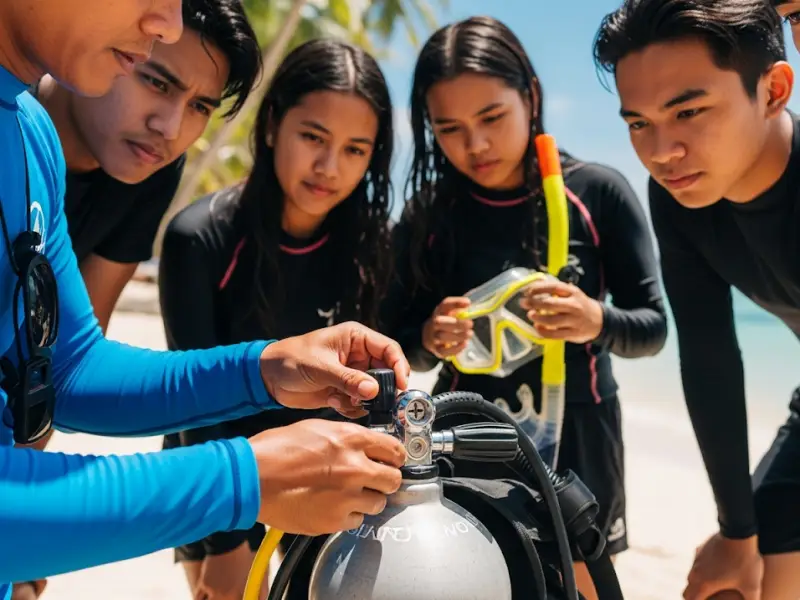
🪪 Step-by-Step Process to Get Certified
🏫 Step 1: Choose a Dive School
Pick a dive center accredited by PADI, SSI, or NAUI. Accreditation guarantees that your certification will be accepted worldwide.
Popular certification spots:
-
Anilao, Batangas – Closest to Manila; macro heaven and weekend-friendly.
-
Moalboal, Cebu – Famous for the sardine run, turtles, and chill town vibes.
-
Panglao, Bohol – Calm waters and stunning reefs, perfect for first-timers.
-
Puerto Galera, Mindoro – Easily accessible from Manila, diverse marine life.
-
Coron, Palawan – Wreck dives for adventurous beginners.
Tip: Check if the price includes everything – gear rental, boat fees, instructor, and certification card.
📘 Step 2: Knowledge Development
Before diving in, you’ll cover the theory of scuba diving. This includes:
-
How water pressure affects your body
-
How scuba gear works (mask, fins, regulator, BCD, tank)
-
Safety signals and buddy communication
-
Planning dives and handling emergencies
Many schools now offer online modules, so you can complete the classroom part at home before traveling. This saves you valuable vacation time.
🏊 Step 3: Confined Water Training
Your first underwater practice takes place in a pool or shallow sea water. Skills include:
-
Clearing your mask if water leaks in
-
Recovering your regulator (the mouthpiece)
-
Learning buoyancy control (hovering mid-water)
-
Practicing buddy checks and emergency procedures
This step builds comfort and confidence before the real dives.
🌊 Step 4: Open Water Dives
This is the highlight of the course. You’ll complete 4 open water dives over 2 days.
-
Dive 1–2: Shallow dives (6–12 meters), practicing skills.
-
Dive 3–4: Deeper dives (up to 18 meters), exploring reefs or wrecks.
Expect to see schools of fish, corals, and maybe even a turtle or reef shark – unforgettable moments for any beginner.
🎓 Step 5: Certification
After finishing the dives and theory, you’ll receive your Open Water Diver card (digital + physical). With it, you can:
-
Dive up to 18m with a buddy
-
Rent scuba equipment worldwide
-
Join fun dives without repeating training
Note: The certification does not expire, but if you stop diving for a year or more, a refresher course is recommended.
💸 How Much Does It Cost in the Philippines?
| Location | Cost Range (₱) | Inclusions |
|---|---|---|
| Anilao (Batangas) | ₱18,000 – ₱22,000 | Gear, instructor, boat, certification |
| Moalboal (Cebu) | ₱16,000 – ₱20,000 | Gear, sardine run dives, instructor |
| Panglao (Bohol) | ₱18,000 – ₱22,000 | Classroom, pool session, gear |
| Coron (Palawan) | ₱20,000 – ₱25,000 | Gear, wreck dives, certification |
| Puerto Galera | ₱17,000 – ₱21,000 | Gear, instructor, boat, certification |
Tipid tip: Group discounts are common if you’re enrolling with friends.
🧰 Gear: What’s Provided vs What to Bring
Most dive schools provide a full set of scuba gear:
-
Mask and snorkel
-
Fins
-
Regulator
-
BCD (buoyancy control device)
-
Wetsuit
-
Air tanks
What you should bring:
-
Rash guard (for sun and comfort)
-
Personal mask/snorkel (optional but better for hygiene and fit)
-
Waterproof camera or GoPro (optional but fun for memories)
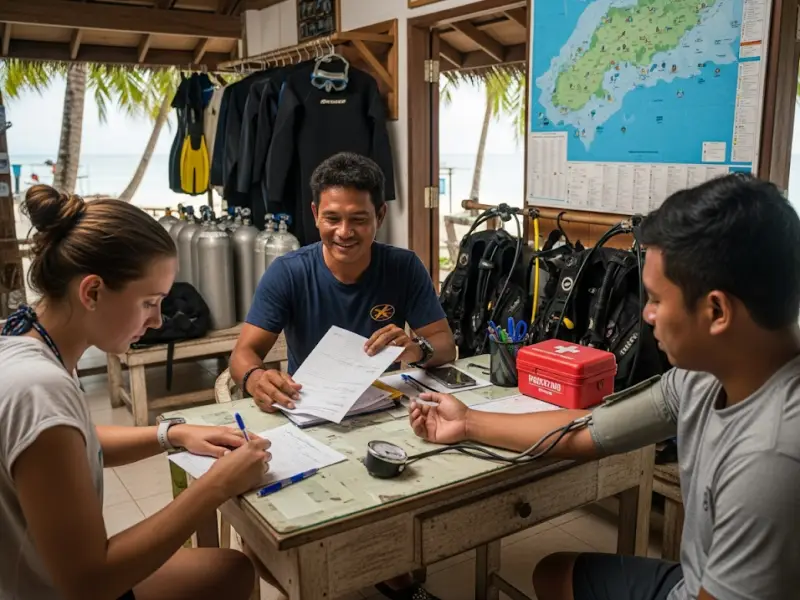
🛑 Safety & Medical Requirements
Scuba diving is an adventure sport, but it’s built on safety first. Before you dive into the underwater world, here are the key requirements every new diver should know:
🏊♂️ Swimming Ability
You don’t need to be Michael Phelps – this isn’t a speed test. What’s required is basic water confidence:
-
Swim 200 meters (any stroke, no time limit)
-
Float or tread water for 10 minutes
That’s it. The goal is to make sure you’re comfortable in the water, not an Olympian.
🩺 Health Clearance
Good health is essential since diving puts pressure on your lungs, ears, and circulatory system.
-
Common conditions like asthma, epilepsy, or heart problems may need a doctor’s note before you’re allowed to dive.
-
During registration, you’ll fill out a medical questionnaire. Answer honestly – it’s about safety, not exclusion.
-
If in doubt, get a medical checkup beforehand so you’re cleared and confident.
🛡️ Insurance
While accidents are rare, dive-specific insurance adds an extra layer of security.
-
Organizations like DAN (Divers Alert Network) or DiveAssure cover diving-related emergencies, including recompression chamber treatments.
-
Some dive shops include limited coverage in their courses, but it’s always smart to double-check.
✈️ Wait Before Flying
After diving, your body still carries extra nitrogen. Flying too soon can trigger decompression sickness (a serious condition).
-
Rule of thumb: Wait 18–24 hours after your last dive before boarding a plane.
-
If you’re doing multiple dives or a deep dive, lean toward the longer end of that range.
✅ Bottom Line
The ocean is breathtaking, but safety is non-negotiable. If you’re healthy, honest about your limits, and follow these guidelines, diving is one of the safest and most rewarding adventures you’ll ever try.
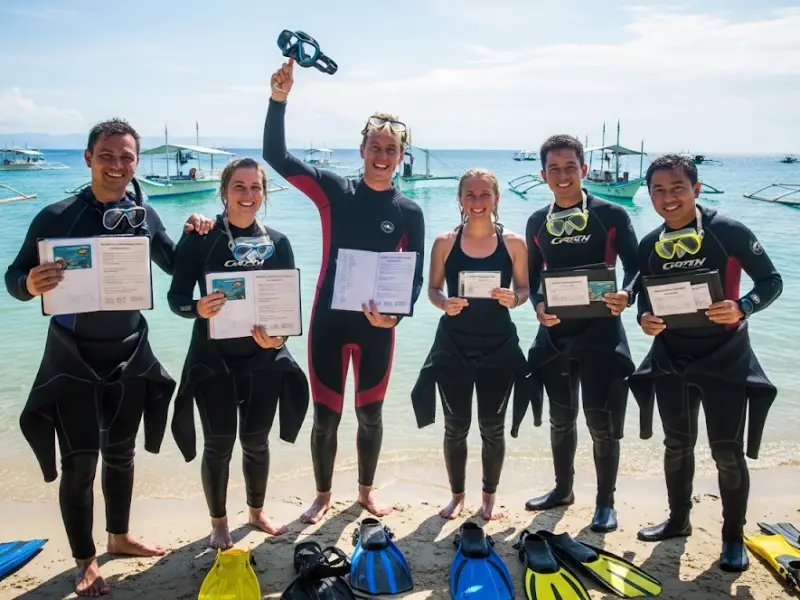
🌍 Best Places in the Philippines to Get Certified
🐟 Anilao, Batangas
-
Just 2–3 hours from Manila.
-
Great for macro photography (nudibranchs, seahorses).
-
Best for: quick weekend learners.
🐢 Moalboal, Cebu
-
Known for the sardine run and sea turtles.
-
Chill town vibe, lots of hostels and dive shops.
-
Best for: backpackers and budget travelers.
🪸 Panglao, Bohol
-
Crystal-clear waters, colorful reefs.
-
Beginner-friendly dive spots like Balicasag Island.
-
Best for: families and couples.
🚢 Coron, Palawan
-
Famous for WWII shipwrecks.
-
Offers both beginner-friendly reefs and wreck dives.
-
Best for: adventurous learners.
🐠 Puerto Galera, Mindoro
-
UNESCO-listed biosphere reserve.
-
Easy access from Manila, varied marine life.
-
Best for: first-timers who want diverse diving without flying.
📱 Useful Apps & Communities
-
PADI App – Digital logbook, dive planner, course tracking.
-
Subsurface – Free software for logging dives.
-
Facebook groups (e.g., Scuba Diving Philippines, PADI Philippines) – for updates, buddies, and promos.
“Your Open Water Diver certification never expires – but if you haven’t dove in over a year, a quick refresher helps keep your skills sharp.”
📚 Frequently Asked Questions
Do I need to be a strong swimmer?
No, just basic swimming skills and comfort in water.
How long does certification take?
3–4 days, depending on the dive school.
Can kids get certified?
Yes, Junior Open Water is available from age 10+.
Do I need to buy my own gear?
Not for beginners – schools provide full gear. Later, you may want your own mask, fins, or wetsuit.
What’s the difference between PADI and SSI?
Both are internationally recognized. PADI is more common, SSI is slightly cheaper and offers flexible e-learning.
Is certification permanent?
Yes, it doesn’t expire. But refresher dives are recommended if you stop diving for over a year.
Where’s the cheapest place to get certified?
Moalboal and Puerto Galera tend to be more affordable than Palawan.
Can I dive after certification without a guide?
Yes, as long as you’re with a buddy and within depth limits.
❤️ Diving Opens a New World
The first time I completed my certification dives, I’ll never forget the moment I hovered weightless next to a sea turtle in Moalboal. The silence, the colors, the feeling of floating – it was like stepping into another planet.
That’s what diving gives you: not just adventure, but perspective. It shows you the hidden beauty beneath the waves, the fragility of marine life, and the joy of exploring beyond your comfort zone.
So if you’ve ever dreamed of breathing underwater, don’t wait. The Philippines is one of the best places in the world to take your first plunge. Sign up, take the course, and discover a whole new world waiting below the surface. 🌊🐢



